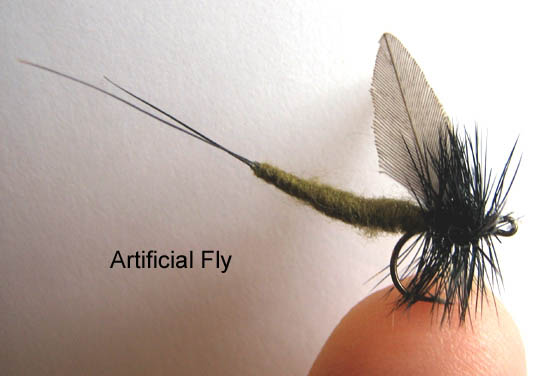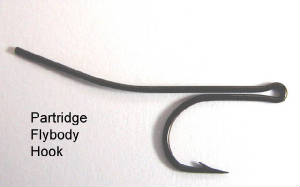Welcome to River Magic
Stillwater Slim on the Line ... April 2, 2008
|
Mayfly Cycle Part 3 – The Dun
A major hatch of mayfly duns can make for some wonderful fly fishing. Trout take duns on the surface as they dry their wings in preparation for flight. Then they fly off to nearby bushes to await their final transformation into a spinner, the mayfly’s mating and final stage.
If we see many mayflies in the bushes, but none on the water, we can “salt” the water with mayfly duns to get the trout feeding. The technique I’m familiar with is to cut a short, bushy spruce limb and soak it thoroughly in water. Then beat the bushes with a canoe paddle or something so as to cover the wet spruce limb with mayflies.
Position yourself to cast down stream or down wind and sprinkle a few mayflies onto the water. This may get some trout “started”, and if so, they should take your artificial fly. Take care not to salt the water too heavily, because the feeding trout may follow them as they are blown out of your casting range.
A traditional dry fly that roughly imitates the dun stage of our first mayfly hatch is the Blue Upright, familiar to most fly fishers. A remarkably realistic artificial dry fly can be easily tied on the Partridge Yorkshire Fly Body hook, available in sizes 10 – 16. The following pattern is a great imitation of Nova Scotia’s early mayfly dun.
Blue Dun Mayfly
Hook – Partridge Yorkshire Fly Body Hook, size 12 Thread – Black Tails – Two black, tapered, paintbrush bristles Body – Black or dark dun grey synthetic dubbing (like Superfine Dry Fly Dubbing) Wings – Dun grey hen hackle cut (or burned, using a disposable lighter and a brass wing-burner) Hackle – Dark dun grey
The fly is tied in two stages:
1)
With the eye of the hook held by your vice, tie on the tails
and body then tie off the thread,
2)
Turn the hook around so your vice grasps the hook by its bend,
the normal position. Tie the
|
||||||||||||||||||||||||


